Working with the Sequence Editor
When the mouse pointer is moved over a step, it is highlighted in gray. When the pointer is moved over the empty end of a connection, a gray triangle is displayed. The steps can be selected via clicking changing the color of selected step to red. The multiselection of steps is also possible.
Steps can be moved by drag&drop. When the Ctrl key is also pressed, the steps are copied. Possible insert positions for moved or copied steps are marked with a red dotted line.

When the mouse pointer is moved over a jump element whose target is available in the current sequence, the text field of the jump reference is also connected to the specified target step by a dashed line. The target is also marked with a dashed circle.
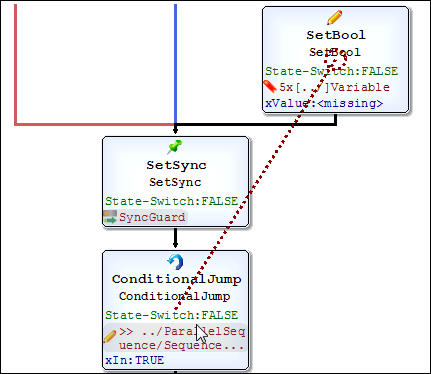
Commands of the Sequence Editor
A right click on a sequence step or on the gray triangle (empty parallel step of branch) provides the context menu commands which are available on this position. In addition to the standard Cut, Copy, and Paste commands, the menu provides the following commands:
Add Step after
Any subsequent steps are displayed in a list command. As a result, only steps and modules are added which would be suitable in the module slot at this location.
Add Step after closed Subsequences
This command can be used when subsequences of branches and parallel sequences need to be closed. The inserted step is added after the subsequences and not within them. It is only available for positions having closable subsequences.
Add Comment
Adds a comment to the selected step.
Set jump reference
This command is only available in the context menu of a jump element. The mouse can be used to draw a red line to the target step.
Tip
The context menu of selected sequence elements can also be opened with the space bar.
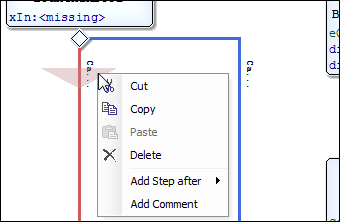
Consecutive steps are connected with arrows. For the branch element, different colors can be defined for the two branches. For more information, see: mse.Sequence. The colors are defined in the CODESYS options (Sequence Editor).
Change the position on sequence steps
To change the position of a sequence element the element must be selected and dragged by use of the middle mouse key. The arrangement of the parameters within the step can also be changed.
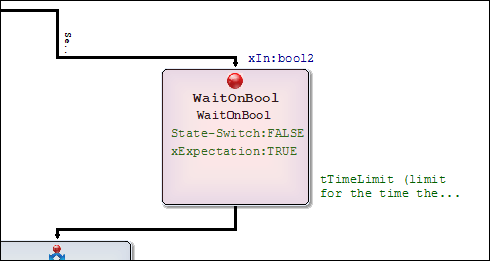
Tip
As a result, only the position of the element can be moved in the editor – changing the position within a sequence and therefor the order is not possible.
Change parameter / comments / instance name / I/O channels
To change a parameter, it has to be double clicked. Depending on the data type of the variable the field can be edited or the variable value can be selected from a list box (example: TRUE or FALSE).
Comments or instance names can be also changed by double clicking.
Editing of references
A reference can be edited by right clicking it. The context menu provides a list of references which can be inserted at this location.
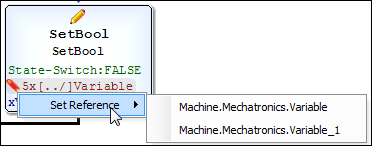
In case of a jump reference, the context menu provides the Set Jump Reference command. Executing this command allows to set the jump target using the mouse. A dotted red line is drawn to the target, which can be set by clicking on it. An existing jump reference can be deleted with the Delete from the context menu.
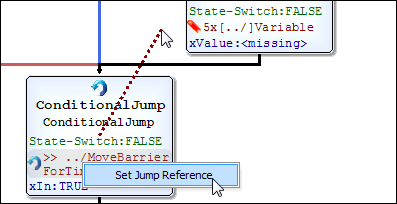
Editing with I/O channels
A double click on the I/O channel opens the I/O mapping dialog, which is also used in the I/O editor of module instances. For more information, see: I/O